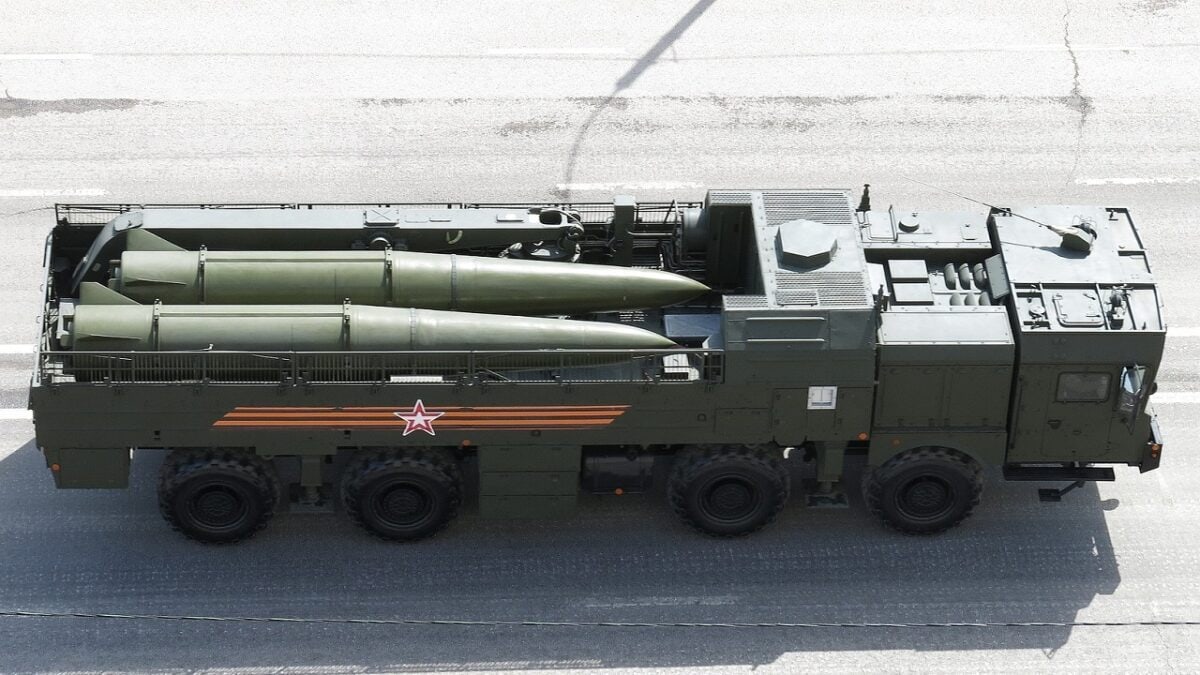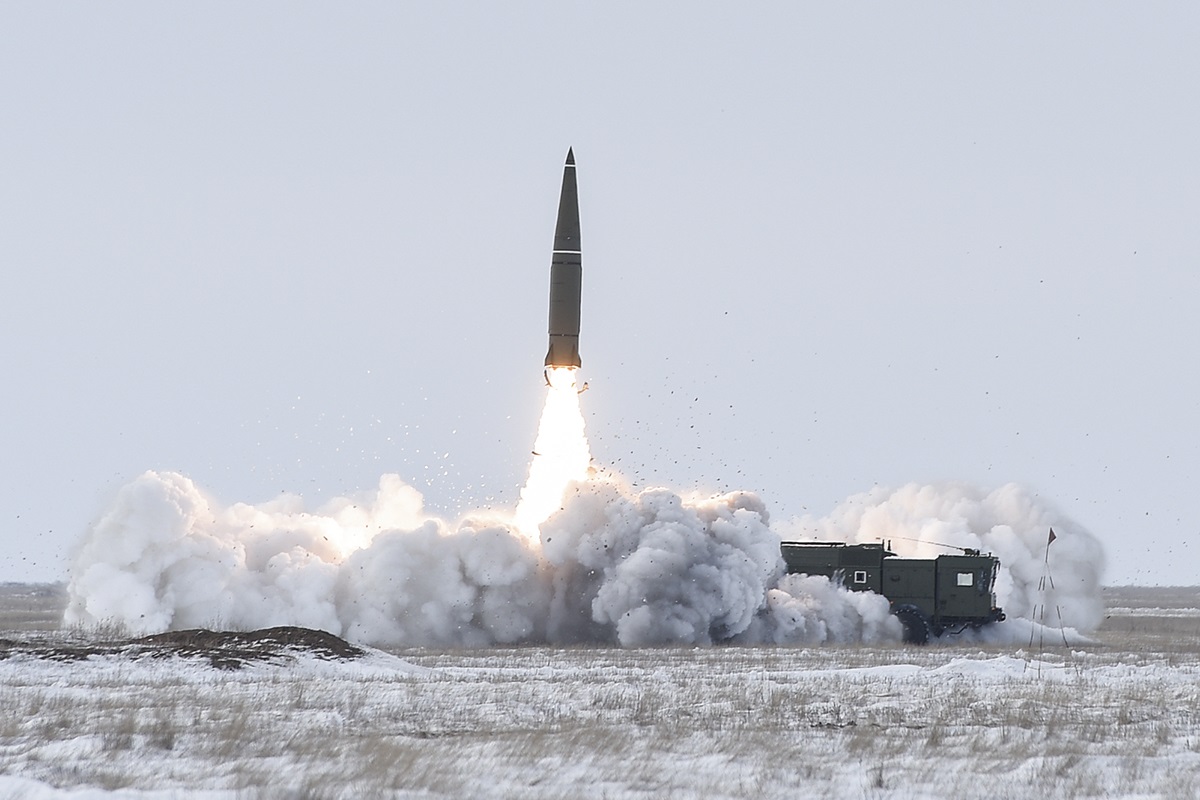According to Russian-state media, the teams of the Baltic Fleet’s Iskander tactical missile systems carried out sole and multiple electronic launches against simulated targets during exercises on Wednesday. The Fleet’s press office reported that these hypothetical military drills took place in the Kaliningrad Region, encompassing three missile systems and over 50 troops. This latest report is the Russian outlet’s latest reference to its self-proclaimed “sniper” missile system.
Throughout the Kremlin’s invasion of Ukraine, Russian forces deployed its arsenal of Iskander-M mobile battlefield missile launchers to aid its war efforts.
What Is the Iskander?
The Iskander missile launcher, codenamed SS-26 Stone by the North Atlantic Treaty Organization, was developed in the 1970’s to replace the Soviet Union’s Scud-B missile system. The missile initially became operational in 2006 when the weapon was first acquired by the Russian military. Moscow announced its plans to modernize and enhance the Iskander missile in 2016. The U.S. countered the sale of the variant, arguing that the cruise missiles used by the Iskander-K violate the Intermediate-Range Nuclear Forces Treaty (INF) due to their range.
Equipped with two solid-propellant single-stage guided missiles, the Iskander is capable of detecting targets by its satellite, aircraft and conventional intelligence. The Iskander has a range of approximately 400-500 kilometers and can carry conventional and nuclear warheads up to 700 kilograms. According to the Missile Defense Advocacy Alliance, the Iskander “employs a maneuverable re-entry vehicle (MaRV) and decoys to defeat theater missile defense systems. Conventional warheads that can be equipped by the Iskander include cluster warheads, fuel-air explosives, bunker-busters, and electromagnetic pulse (EMP) warheads.”
Once deployed, missiles can be launched within 16 minutes from a mobile launcher. Furthermore, a second missile can follow in less than one minute following the successful launch of a previous missile.
In August, Russian news outlets circulated a photograph appearing to display one or two Iskanders deploying missiles. The Russian Ministry of Defense claimed in a statement, also in mid-August, that the images depicted one of their Iskanders “striking at the military infrastructure of the Armed Forces of Ukraine in the zone of the special military operation.” The Ministry added that “In the course of the special military operation, the Armed Forces of the Russian Federation continue to strike with precision-guided missiles at military infrastructure facilities of the Armed Forces of Ukraine.” The Ministry also asserted that “According to the missilemen, if desired, it can even fly into a window.”

Iskander Transport Loader 9T250
Since the onset of Moscow’s invasion of Ukraine, the Iskander missile launchers have played a significant role in the conflict. In March, U.S. officials discovered that Russian Forces had been firing decoys against Ukraine that trick air-defense radars and fool heat-seeking missiles. The Iskanders could apparently be loaded with at least six decoys, which slot into tubes positioned at the base of the missile body. The dual-purpose of the decoy, to jam radar-frequencies and project a false heat source to confuse the infrared-guided missiles, may not have been known by military and industry experts prior to their use in Russia’s invasion. According to the New York Times, “the use of the decoys may help explain why Ukrainian air-defense weapons have had difficulty intercepting Russia’s Iskander missiles.”
Iskander Shortage?
While the Iskander tactical missile system has served the Russian Forces reasonably well at the beginning of the conflict, recent reports indicate Moscow is running low on missiles. Last week, Ukrainian intelligence reports claimed that after six months of warfare, only 20% of Russia’s Iskander-M short-range ballistic missiles remain.
Although it is difficult to gauge the exact state of Moscow’s weapons arsenal at this point in time, these reports do not bode well for Russia’s long-term success.
Maya Carlin is a Middle East Defense Editor with 19FortyFive. She is also an analyst with the Center for Security Policy and a former Anna Sobol Levy Fellow at IDC Herzliya in Israel. She has by-lines in many publications, including The National Interest, Jerusalem Post, and Times of Israel.

